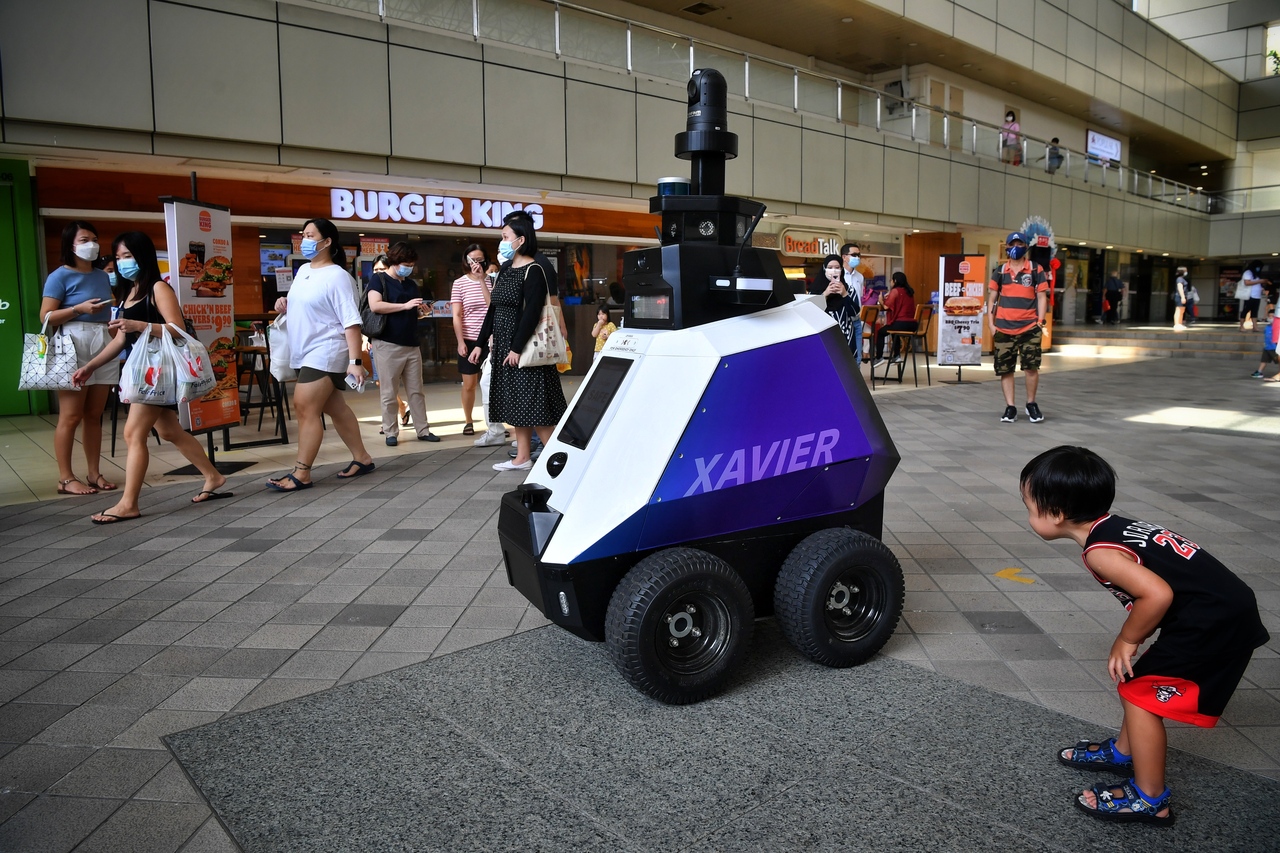Dashboard to control all Home Team robots on trial at Toa Payoh
Sign up now: Get ST's newsletters delivered to your inbox

Orders from a single person would be executed synchronously by the robots.
PHOTO: ST FILE
Follow topic:
SINGAPORE - A few taps on a mobile device may soon be all that is needed to deploy an entire fleet of police robots across the Republic.
Orders from a single person would then be executed synchronously by the robots, which include the Multi-purpose All-Terrain Autonomous Robots (Matar) and the Rover-X robotic dog.
Developed by the Home Team Science and Technology Agency (HTX) in partnership with IT firm NCS and the Agency for Science, Technology and Research (A*Star), the common robotics dashboard is meant to bring control of the bots under the Home Team onto a single platform.
Currently, it is being trialled by the Singapore Police Force (SPF) at Toa Payoh Transport Hub.
Police officers are using the dashboard on a computer to control multiple Matar deployed in the area, simulating different scenarios such as detection of potential threats and dispersing crowds.
The trial began on Jan 17 and is expected to run till Jan 28.
Deputy Superintendent of Police (DSP) Lim Jim Kai, of the Future Operations and Planning Department of SPF, lauded the initiative's potential during a showcase on Thursday (Jan 20).
"The common robotics dashboard will better enable us to deploy and operate Matar as force multipliers," he said.
"It allows a single operator to have control over multiple front-line robots."
HTX has been involved in the development of numerous bots over the years, including cyborg bugs, the autonomous robot Xavier and drones.
At present, these bots have different controls and interfaces, requiring operators to be specially trained to use each of them.
Mr Ong Ka Hing, deputy director of ground systems at HTX's Robotics, Automation and Unmanned Systems Centre of Expertise, said the goal is to create a common platform for the different types of robots.
"This dashboard will bring all of them together, so they can be operated seamlessly from just one platform," he said.
"This means that when the Home Team does scale up the numbers of bots, they need not have a corresponding increase in manpower."
The dashboard also has the potential to access security cameras.
But at this point in time, the development is looking primarily at the Matars, Xavier and Rover-X, he said.
Mr Ong added progress on the system has been encouraging.
"We feel heartened by our progress so far, especially when we see how our work has contributed to keeping Singapore safe and secure. We hope to further tap on the potential of technology to be a force multiplier for the Home Team."
When the autonomous robot Xavier was seen patrolling during a trial at Toa Payoh HDB Hub in September last year, concerns were raised about surveillance and privacy.
International media carried headlines regarding the robot, fearing a dystopian surveillance state with privacy being infringed upon and sacrificed.
There were also fears that such technologies would be abused if accessed by bad actors.
Asked about concerns the dashboard may be abused if hacked, Mr Ong said there are numerous safeguards in place.
"The system is designed with cyber security in mind," he said.
"We know there are concerns regarding how this system might be used if compromised, but we remain ever vigilant to ensure this will not happen. We do this by continually subjecting the system to stringent vulnerability assessments and penetration tests."
Mr Stas Protassov, co-founder and technology president of cyber-protection firm Acronis, said if the dashboard was targeted and compromised, the attackers may be able to gain control of all the connected devices.
“Most robots do have additional measures in place to prevent them, for example, from driving into a busy street - but they could still be used to create some nuisance and inconvenience for the public,” he said.
“The larger issue is, of course, privacy leaks. Having access to such camera feeds could be used to spy on people or leak unfavourable images to the public.”
National University of Singapore Associate Professor of Sociology Tan Ern Ser said surveillance is a double-edged sword.
"It can help solve crimes more speedily, which is a good thing, but it could also be experienced as rather intrusive by law-abiding citizens who value their privacy," he said.
"They may also be concerned about data routinely gathered, even if they are not related to crime, but could become an instrument of social control."
Asked if he thinks Singaporeans are ready to accept more robots, drones and cameras for police surveillance, Prof Tan said they would likely be ambivalent because of both the pros and cons.
"However, if there is strong trust in the authorities that they would use the devices for the purpose intended and not for anything else, they would probably tolerate it, if not accept it," he said.
"I believe it boils down to trust of and assurance from the authorities."

